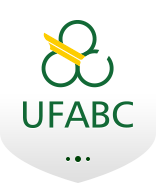Banca de QUALIFICAÇÃO: MATHEUS MENDES DE OLIVEIRA
Uma banca de QUALIFICAÇÃO de DOUTORADO foi cadastrada pelo programa.STUDENT : MATHEUS MENDES DE OLIVEIRA
DATE: 03/12/2024
TIME: 10:00
LOCAL: https://teams.microsoft.com/dl/launcher/launcher.html?url=%2F_%23%2Fl%2Fmeetup-join%2F19%3Ameeting_ZDcxMGQ2YjgtNTJmZC00OTY5LTk1NzItMTkwNWJmMGE2Njcx%40thread.v2%2F0%3Fcontext%3D%257b%2522Tid%2522%253a%252229147a65-536d-43f9-b802-e0a1b5cf9dbf%2522%252c%2522Oid%2522%253a%252259465c64-8873-4920-b2c5-7a4b2cb41507%2522%257d%26anon%3Dtrue&type=meetup-join&deeplinkId=b65222b8-92b7-4893-ba55-fa51183f206e&directDl=true&msLaunch=true&enableMobilePage=true&suppressPrompt=true
TITLE:
Electrically conductive nano-reinforced epoxy/polyetherimide semi-interpenetrating polymer networks for aerospace applications
PAGES: 150
BIG AREA: Engenharias
AREA: Engenharia de Materiais e Metalúrgica
SUBÁREA: Materiais Não-Metálicos
SPECIALTY: Polímeros, Aplicações
SUMMARY:
Just over a century ago, the advent of polymer materials revolutionized the engineering landscape by gradually replacing metallic materials in various applications. However, conventional polymers lack electrical conductivity, a crucial property for many technological applications. Conductive polymer composites filled with conductive nanomaterials emerged as a promising solution. A key application for electrically conductive nanocomposites is in the aircraft industry, where weight reduction is essential for fuel efficiency and cutting of CO2 emissions. Carbon fiber-reinforced polymer (CFRP) composites lack enough electrical conductivity to withstand lightning strikes and shield the aircraft from electromagnetic interference (EMI). Thus, aircraft structures are equipped with metallic lightning strike protection (LSP) that adds significant weight and can lead to corrosion. Emerging nanomaterials such as graphene nanoplatelets (GNP) and carbon nanotubes (CNTs) offer lightweight, multifunctional alternatives to metallic LSP systems, de-icing and damage monitoring. Research efforts have been made to maximize electrical conductivity in nanocomposites while reducing the amount of nanoparticles needed. Interpenetrating polymer networks (IPNs) are a promising class of biphasic polymer materials that have been known for decades, but remain largely underexplored in the nanocomposite field. This thesis explores the potential of IPNs to improve electrical conductivity of nanocomposites. The primary focus is on epoxy/polyetherimide semi-IPNs filled with selectively located GNPs, but the effects of other carbon nanomaterials, including CNTs and carbon black (CB), on nanocomposite morphology and performance are also investigated. The study finds that these carbon nanoparticles reside exclusively within the PEI-rich phase, but the presence of a secondary phase separation generates epoxy-rich droplets that disrupt the long-range connectivity between the nanoparticles. Each nanoparticle is affected differently, depending on their geometry, weight fraction, and their own impact on the semi-IPN morphology. PEI is shown to improve toughness when a dispersed morphology is present, while a co-continuous morphology degrades it due to poor interfacial bonding between the phases. GNPs increase stiffness at the expense of impact strength, both in pure epoxy and semi-IPN matrices. Additionally, for the first time, electric-field alignment of nanoparticles in a semi-IPN-based nanocomposite is demonstrated and monitored through electro-rheology. Preliminary tests show improved electrical conductivity below the percolation threshold due to alignment. These findings highlight the complex interplay between nanomaterials, polymer matrix morphology and resulting material properties, providing insights for developing advanced conductive nanocomposites for aerospace applications.
COMMITTEE MEMBERS:
Presidente - Interno ao Programa - 1961116 - DEMETRIO JACKSON DOS SANTOS
Membro Titular - Examinador(a) Externo ao Programa - 2604737 - EVERALDO CARLOS VENANCIO
Membro Titular - Examinador(a) Externo à Instituição - SERGIO HENRIQUE PEZZIN
Membro Titular - Examinador(a) Externo à Instituição - NICOLE RAYMONDE DEMARQUETTE
Membro Suplente - Examinador(a) Interno ao Programa - 2605463 - JOSE ANTONIO SOUZA
Membro Suplente - Examinador(a) Interno ao Programa - 1545738 - MARCIA TSUYAMA ESCOTE
Membro Suplente - Examinador(a) Externo ao Programa - 1730526 - SUEL ERIC VIDOTTI
Membro Suplente - Examinador(a) Externo ao Programa - 2604128 - ALEXANDRE JOSE DE CASTRO LANFREDI




